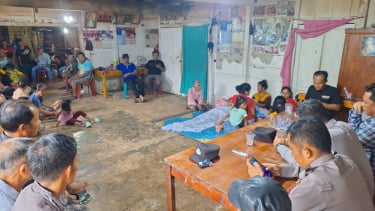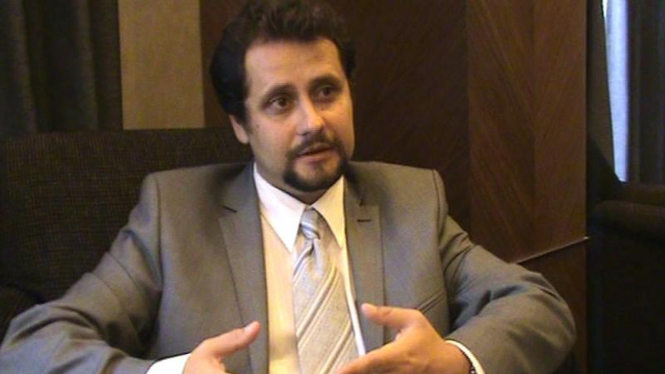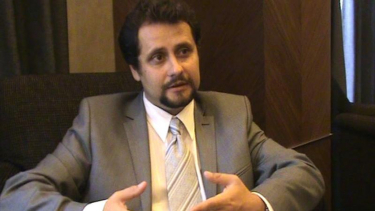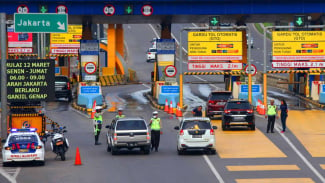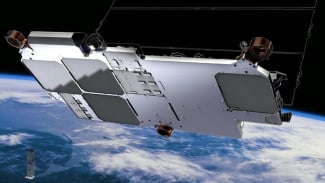Ancient Mud Volcano Exists in Sidoarjo
VIVAnews - It has been four years since the hot mud started pouring Porong, Sidoarjo, East Java. Now, the incident occurred on May 29, 2006, is still haunting the area with 150 thousand cubic mud everyday.
Scientists offer various arguments on the mud volcano issue. Many of them believed that the mudflow was caused by the oil drilling done by PT Lapindo Brantas while others viewed that the mud volcano is due to seismic activities happened not long after Yogyakarta was hit by massive earthquake on May 27, 2006.
Recently, some Russian geologists unveiled a surprising fact on the Sidoarjo Mud based on a six-month research. They concluded that the mud outflow is a result of the activities of ancient mud volcano in the area.
Experts from the Odessa National University, Ukraine, the Ministry of the Environment of Ukraine, and AP Karpinsky Russian Geological Research Institute/VESEGEI were involved. One of them defined the spot fro Iranian nuclear power plant in Bushehr, Iran.
VIVAnews' reporters Indra Darmawan and Denny Armandhanu interviewed Dr Sergey V Kadurin, Prof Igor Nikolaevich Kadurin, and Yuriy P Rakintsev at a hotel in Jakarta on Friday, Oct 1.
What exactly the research is for? What drove you to conduct such a research here in Indonesia?
Sergey Kadurin: I'm a researcher on mud volcano. This is a good chance for me to visit Indonesia because the mud volcano is deemed the largest in the world which is categorized as caldera. I'll certainly never waste the opportunity. Earlier, we've conducted the same researches on mud volcanoes in Ukraine and Azerbaijan. We're now aiming at testing our methodology in Indonesia.
Who funded you for the research? Was there any of the companies linked to PT Lapindo Brantas behind you?
Sergey Kadurin: All fund is provided by Russian oil and gas firm RINeftGaz.
Yuruy Rakintsev: The research proves good ties between Indonesia and Russia. RINeft Gaz has long owned businesses in Indonesia. We've been partnering with many firms including Pertamina (state oil and gas company). Both countries have never engaged in any conflict. Some top projects in Indonesia, including Senayan soccer stadium, have been jointly developed by the two countries.
I went to Kalimantan some time ago. I was informed that the main roads in the province were built by Russian engineers in the 1950s. And now, the roads are still okay.
The research was initiated by a visit involving the heads of each state. After Vladimir Putin came to Indonesia in November 2007, both countries agreed to cooperate in, among any others, working on the research.
What are those researches?
Sergey Kadurin: As you may have been informed, Indonesia, particularly Sumatra and Java, is a place where two tectonic faults collide: Australian fault is in the south while Eurasian fault is in the north. The Australian fault hits the Eurasian fault at 7 cm per year, which is considered the highest tectonic speed on earth.
The collision of both faults has resulted in the development of volcanoes on the northern part of the fault-line as well as the secondary convection cell which is commonly seen in oil, gas, and mud volcanoes. The area is also called the back-arc basin.
From two 2D seismic data that we gathered from the Indonesian government, we began identifying the mud structure. This involved at least 36 seismic profiles whose total length is more than 600 km. Field research also takes place to examine the geologic-geophysic conditions in East Java as well as the Sidoarjo mud.
In fact, there are 15 mud volcanoes in East Java with the Sidoarjo Mud being the fifteenth as well as the largest amongst others. We also find several faults in the area, including Watukosek fault. We built Geological Information System (GIS) construction for a 3D model in order to be informed about the mud volcano structure.
In addition, we've also gathered earthquake data in the area in the last 25 years (1984-2009). In fact, there were two tremors in the area within a period of 10 months. They occurred on July 9, 2005, and May 27, 2006.
The July 9, 2005, earthquake of 4.4 on the Richter scale had an epicenter 10 km right exactly below the Sidoarjo Mud. The second tremor occurred in Yogyakarta on May 27, 2006, at 6.3 on the Richter scale. According to us, that was the cause of the mud channel of the ancient mud volcano which was formed around 150-200 thousand years ago.
How come it happened? Was the epicenter of the Yogyakarta earthquake very far from the Sidoarjo Mud?
The distance of both spots is almost 200 km in length (185 km). But if you observe at a map, Yogyakarta is situated below the volcano ranges in Java while Sidoarjo is located above the volcano ranges. The magmatic volcanic system resembles a cable.
As you push the lower part of a cable, there will be pressure toward its upper part. Given the magmatic structure, the seismic waves of the Yogyakarta earthquake would affect the structure of the Sidoarjo mud volcano. Therefore, the distance of 200 km in a geologic process means nothing.
Why did the Yogyakarta earthquake not affect other mud volcanoes but the Sidoarjo Mud?
The reason for this is that the Sidoarjo Mud is located on metastable area. Everything is connected there including past earthquakes, volvanic and mud eruptions.
We understand. But how come the mud volcano needed two days after the Yogyakarta earthquake to erupt?
The Sidoarjo mud volcano is not situated at an empty shell. There are levels of rocks. It takes time for mud and water to go up. In fact, the mud was 3 kilometers in depth.
Was earthquake the only cause for the mud outflow?
Earthquake is not the only cause of the mud outflow. The eruption took place more of the geological structure of Java. There was massive mud deposit underneath Sidoarjo. In addition, fault activities could also affect the mud volcano to erupt. In an area nearby the subduction zone, underground pressure was indeed high.
Was the Sidoarjo mud also caused by the drilling of oil by PT Lapindo Brantas?
The oil drilling has nothing to do with the Sidoarjo Mud. If the drilling hit the mud structure, mud should have poured out of the drilling point. In the Sidoarjo Mud case, the outflow occurred some 250 odd meters off the drilling spot. Outflows also occur in several spots instead of only one spot.
Could any vibration that came out of the drilling activities affect the mud structure which as a result may speed up mud outflow?
It was my first assumption. But then I thought that, given the diameter of the well at between 50 cm and 1 meter, the vibration would only cease at around 5-7 meters off the well. The energy of the drilling should have headed toward the ground.
What is the conclusion of your research?
Our study shows that the Sidoarjo Mud is a natural phenomenon which was triggered by an earthquake in Sidoarjo in 2005 and the Yogyakarta earthquake in 2006. There's nothing that can stop nature's forces. Once in Russia, there's a plan to block mud outflow by using nuclear bomb. But it's not true, and it was a terrifying idea.
There's barely anyone that can stop the Sidoarjo Mud from flowing.
Some said such a conclusion would only draw a minor group of researchers to side with. Is it true?
There's only this team of mine that has conducted a geophysical research here. We're the only team that has seismic profiles. We have the technology to make interpretations from seismic profiles.
We have no idea of how these people make use of their grounds. Any conclusion should be based on facts.
It's easy to play the blame game in this kind of situation. PT Lapindo was at that time doing a drilling in the wrong time and at the wrong place.
It's dangerous of assuming that the disaster was caused by an oil drilling. This way, the government then would deny any mud outflow potential in the future, which can actually be anticipated. Based on our observation, there are two other mud channels in the area that may erupt in the future.
What should the Indonesian government do?
We recommend the government to set up different monitoring systems in the areas nearby the mud outflow. The system requires 10 stations and detectors.
Based on the 3D model you created, can you predict when the Sidoarjo Mud outflow would stop?
It depends very much on the mud pressure and structure within. New research is needed to make predictions. For a mud volcano as big as the Sidoarjo Mud, the outflow may continue in 20 years time.
--
Translated by: Bonardo Maulana W
